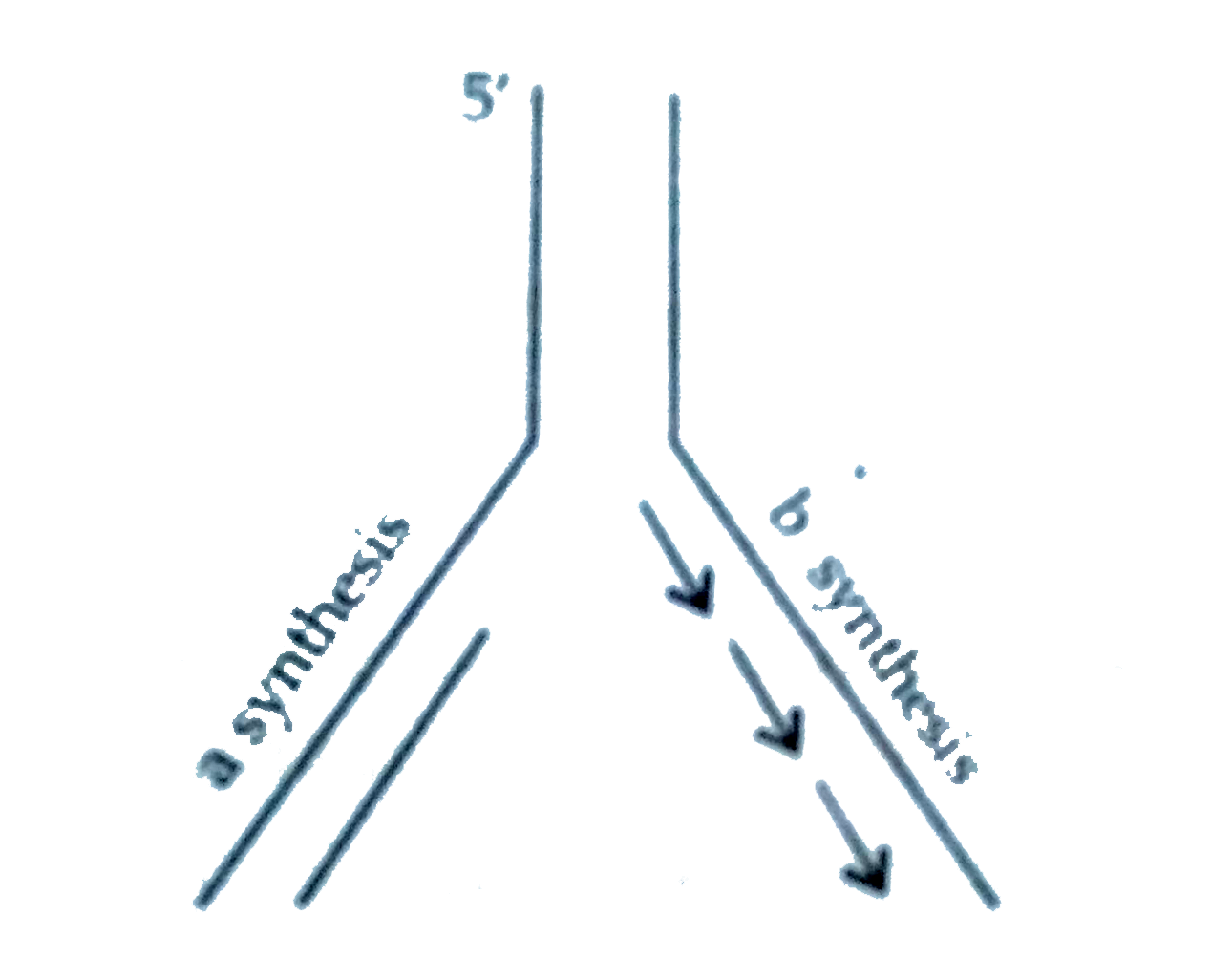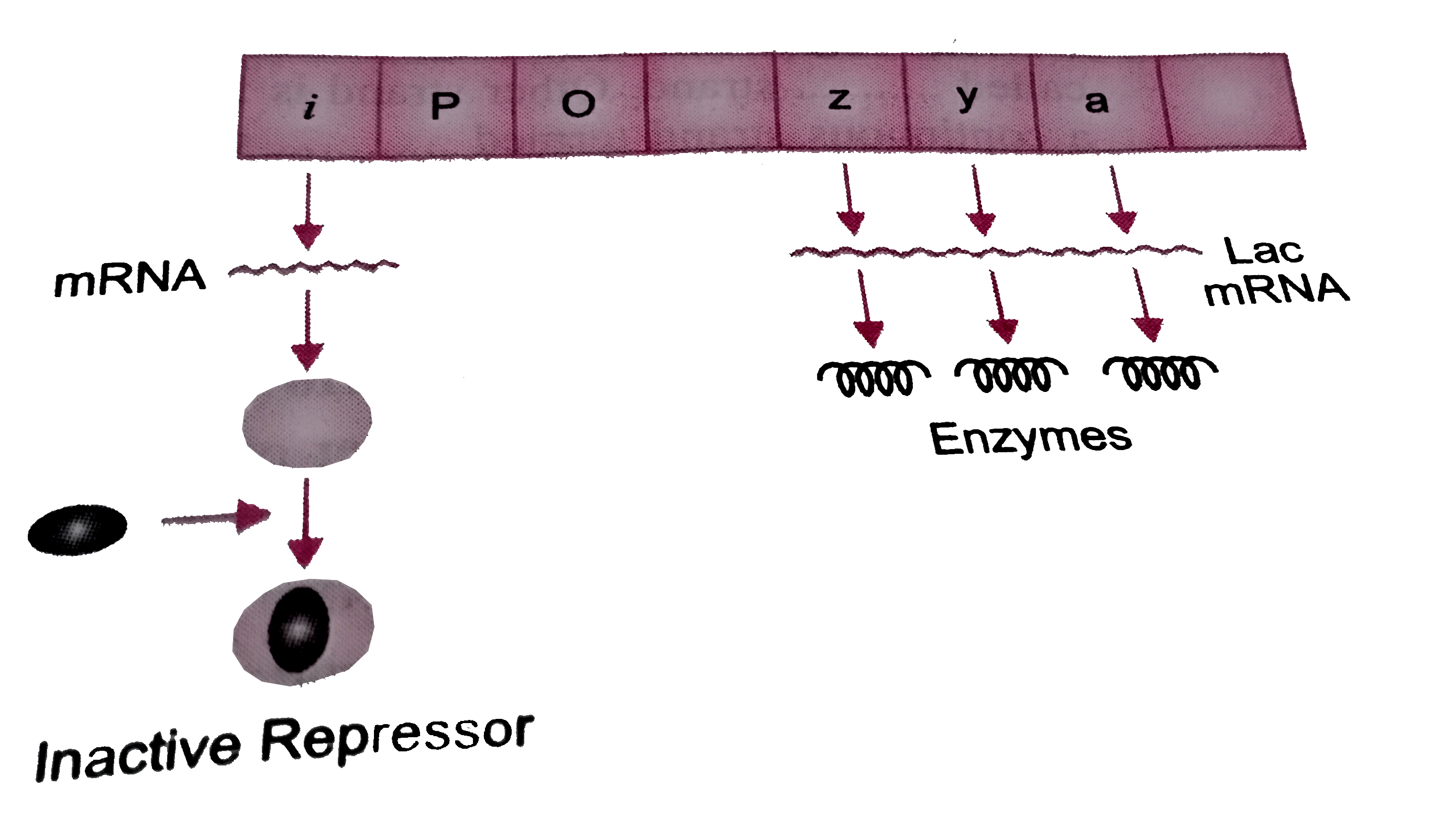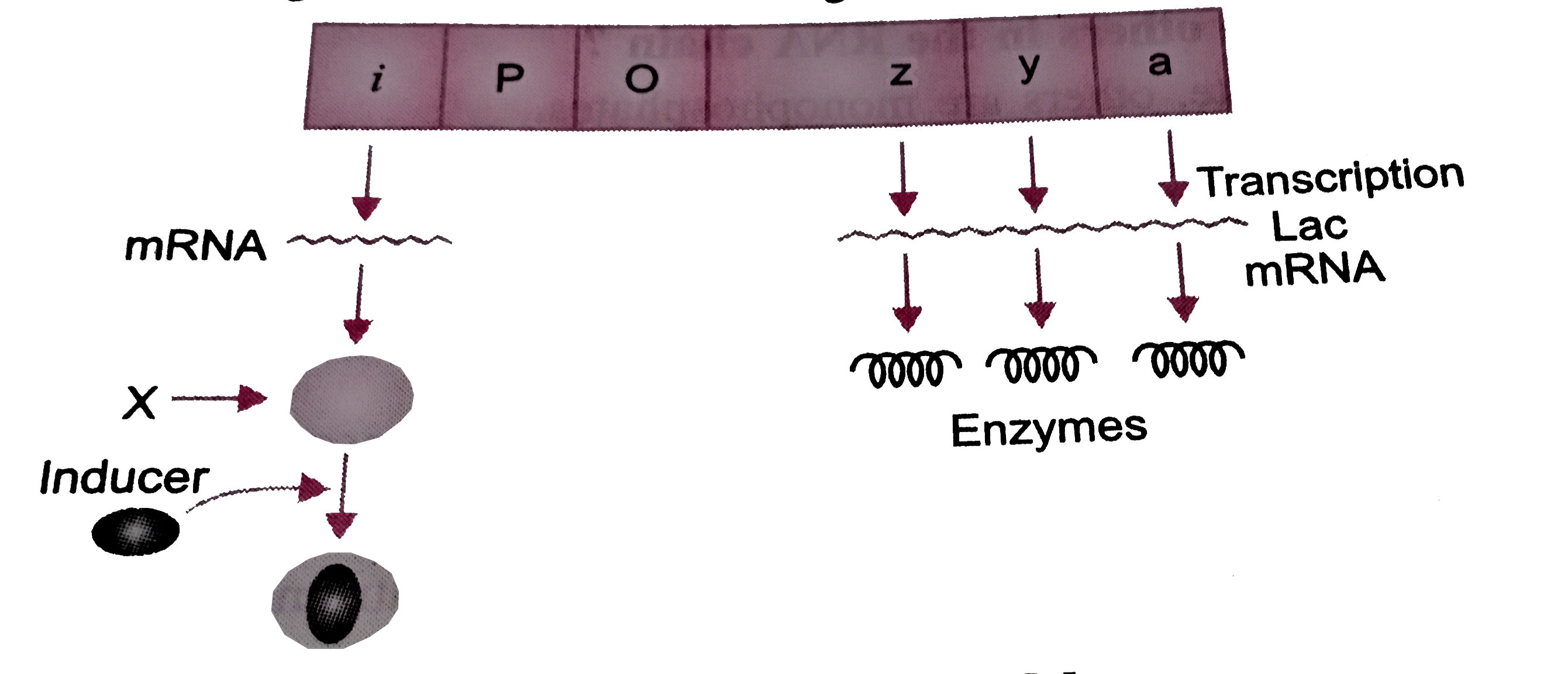Complete Solutions to ADDITIONAL QUESTIONS (SHORT ANSWER QUESTIONS) of chapter MOLECULAR BASIS OF INHERITANCE of Class 12 book with complete answers and questions
| Class 12 | BIOLOGY |
| Chapter | MOLECULAR BASIS OF INHERITANCE |
| PRADEEP | ADDITIONAL QUESTIONS (SHORT ANSWER QUESTIONS) |
| Number Of Questions | 94 |
| Academic Year | 2023-24 |
Who coined the term 'genetic code' ? What does it mean ?
01:37View SolutionDefine genetic material.
01:18View SolutionHow does DNA express its biological information?
02:08View SolutionWhat is the function of missence strand of DNA ?
01:33View SolutionIn which direction are the leading and lagging strands synthesized during DNA replication ? Name the enzyme responsible for this process.
02:04View SolutionWhere and when does replication occur ?
01:32View Solutionparticular strain of Neurospora crassa required citrulline in the medium while the wild type did not. How do you refer to the former ? Why is it so called ?
01:36View SolutionGive the site and time of occurrence of transcription.
01:52View SolutionHow is the first ribonucleotide different from others in the RNA chain?
01:51View SolutionWhat changes happen during processing of RNA?
02:03View SolutionTranscription Unit
04:45View SolutionWhat are auxotrophs ?
02:13View SolutionWhat are two functions of DNA polymerase ?
02:08View SolutionName the types of synthesis ‘a’ and ‘b’ occurring in the replication fork of DNA as shown below:
 01:18View Solution
01:18View SolutionHow can DNA segment, separated by gel electrophoresis be visualised and isolated ?
06:03View SolutionHow is the translation of mRNA terminated ? Explain.
04:30View SolutionStudy the figure given below and answer the questions :
(a) What does the figure express ?
(b) When does the transcription of lac mRNA stop ?
( c) Name the enzyme transcribed by the gene 'Z'.
 05:03View Solution
05:03View Solution
(a) Name the molecule 'X' synthesised by 'I' gene. How does this molecule get inactivated ?
(b) Which one of the structural genes code for `beta`-galactosidase ?
(c) When will the transcription of this gene stop?05:33View SolutionExplain the dual function of AUG codon. Give the sequence of bases it is transcribed from and its anticodon.
03:19View SolutionFill in the blanks :
(i) According to Watson and Ctick model, the DNA molecule consists of ............... long, parallel strands. The two strands are .............. around a common axis in a regular manner to form a ........... helix.
(ii) These strands are made of ............ units. Each such unit consists of .......... , ......... and .............
(iii) In each chain, nitrogenous base molecules are joined to the sugar molecules by ............ bonds and project into the space enclosed in the helix at about .......... to the long axis of the helix.
(iv) The nitrogenous bare may be a 9-membered, double ringed ....... or a 6-membered, single ringed .......
(v) The double helix of DNA has a constant diameter of ......... and one complete spiral (turn) of the helix is .......... long and has ........ base pairs.
(vi) The mode of DNA replication is ...........
(vii) Enzyme ............ cannot initiate the synthesis of a new DNA strand, although it can catalyze the growth of a DNA chain. Therefore, a short chain of .......... is formed on the DNA template at the 5' end. This is called ........
(viii) During DNA replication, one new strand is formed in continuous stretch in the 5' - 3' direction. It is called ........... strand. Other strand is formed in small fragments called .......... which are later joined to form a continuous strand termed ............ strand.03:45View SolutionWrite the full form of VNTR. How is VNTR different from probe?
02:54View Solution(a) Differentiate between a template strand and coding strand of DNA.
(b) Name the source of energy for the replication of DNA09:17View SolutionWhy all the three RNAs are needed to synthesise a protein in a cell?
01:33View SolutionWrite the functions of RNA polymerase-I and RNA-polymerase-III.
02:11View SolutionWrite the names of various nitrogenous bases found in RNA.
01:27View SolutionExplain the role of enzymes nucleases and ligases.
01:59View SolutionDifferentiate between promoter and terminator gene.
03:30View SolutionWhat do you mean by unambiguous and degenerate codon ?
03:17View SolutionGive two functions of t-RNA.
01:35View SolutionGive two differences between m-RNA and t-RNA.
02:44View SolutionWhat do you understand by genome.
03:53View SolutionName the scientists who started the DNA finger printing technique in India.
02:48View SolutionDescribe the structure of a RNA polynucleotide chain having four different types of nucleotides.
04:40View Solutiona) Explain DNA polymorphism as the basis of genetic mapping of human genome.
b) State the role of VNTR in DNA fingerprinting.04:06View Solutiona) Write the conclusin drawn by Griffith at the end of his experiment with Streptococcus pneumoniae.
b) How did O.Avery, C.MacLeod and M. McCarty prove that DNA was the genetic material? Explain.05:23View Solutiona) Write the specific features of the genetic code AUG.
b) Genetic codes can be universal and degenerate. Write about them, giving one example of each.
c) Explain aminoacylation of the tRNA.04:30View Solutioni) Name the scientist who suggested that the genetic code should be made of a combination of three nucleotides.
ii) Explain the basis on which he arrived at this conclusion.02:03View SolutionWhy did scientists prefer to decode rice genome than other related species ?
01:44View SolutionWhat is aminoacylation ? State its significance.
02:58View SolutionDescribe the structure of a nucleosome.
01:37View SolutionDifferentiate between the genetic codes given below :
(a) Unambiguous and Universal
(b) Degenerate and Initiator :02:30View SolutionWhy does the lac operon shut down some time after the addition of lactose in the medium where E.coil was growing ? Why low level expression of lac operon is always required ?
04:42View SolutionGive the structure of a tRNA molecule.
02:19View SolutionWrite down the features of mRNA.
01:37View SolutionCENTRAL DOGMA OF MOLECULAR BIOLOGY
06:33View SolutionWhy is genetic code a triplet one ?
02:03View SolutionWhat is meant by semiconservative replication of DNA ?
04:17View SolutionHow is protein synthesis initiated in a cell.
01:39View SolutionWhat are the functions of mRNA and tRNA ? What anticodons will be required to recognize the following codons ?
(i) AAU, (ii) CGA, (iii) UAU, (iv) GCA.04:15View SolutionExplain the steps involved in the elongation of polypeptide chain during protein synthesis.
02:23View SolutionWhy was it believed earlier that proteins could be the genetic material?
01:56View SolutionWhat are the essential requirements of the genetic material?
01:50View SolutionWhat is a peptide bond? How is it formed.
01:28View SolutionWhich molecule bears codons and which molecule anticodons?
04:05View SolutionWhat was the rationale of using `P^(32) and S^(35)` by Hershey and Chase ? Instead, if we use radiolabelled C and N, will the results be any different ?
05:24View SolutionList three main differences between DNA and RNA.
02:18View SolutionHow did Alfred Hershey and Martha Chase arrive at the conclusion that DNA is the genetic material?
07:35View SolutionWhat do you understand by a leading strand and a lagging strand during DNA replication?
02:18View SolutionOne of the codons on mRNA is AUG. Draw the structure of tRNA adapter molecule for this codon. Explain the uniqueness of this tRNA?
04:34View SolutionGiven below is a part of the template strand of a structural gene `bar("TAC CAT TAG GAT")`
(a) Write its transcribed mRNA strand with its polarity.
(b) Explain the mechanism involved in initiation of the transcription of this strand.01:55View SolutionThe length of a DNA molecule in a typical mammalian cell is calculated to be approximately 22 metres. How is the packaging of this long molecule done to accomodate it within the nucleus of the cell ?
02:13View SolutionExplain the process of charging of tRNA. Why is it essential in translation?
05:04View SolutionDraw a labelled schematic sketch of replication fork of DNA. Explain the role of the enzymes involved in DNA replication.
01:49View SolutionWhat are Satellite DNA in a genome? Explain their role in DNA fingerprinting.
02:10View Solution(a) Draw a schematic representation of the structure of a transcription unit and show the following in it :
(i) Direction in which transcription occurs
(ii) Polarity of the two strands involved
(iii) Template strand
(iv) Terminator gene
(b) Mention the function of promoter gene in transcription.01:41View SolutionDescribe the initiation process of transcription in bacteria.
07:33View SolutionIn a series of experiments with Streptococcus and mice F. Griffith concluded that R-strain bacteria had been transformed. Explain.
04:06View SolutionWho revealed biochemical nature of the transforming principle?
03:01View SolutionThat background information did Watson and Crick have made available for developing a model of DNA ? What was their contribution ?
02:45View SolutionGive any six features of the humen genome.
02:10View SolutionMatch the items given in column I with appropriate items (o ne or more) of column II :
`{:(,"Column I"," Column II"),(,"(i) m- RNA ", "(a) UAA"),(,"(ii) Initition condon ","(b) Beadle and Tatum"),(,"(iii) Termination codon","(c) AUG"),(,"(iv) Anticodon","(d) Hetergoeneous nuclear RNA (hn RNA)"),(,"(v) One gene one enzyme hypothesis","(e) GUG"),(,"(vi) Semiconservative mode of DNA replication","(f) UAG"),(,,"(g) t-RNA"),(,,"(h) Meselson and Stahl"):}`01:34View Solution(i) Name the enzyme that catalyses the trancription of hnRNA. (ii) Why does the hnRNA need to undergo changes? List the changes hnRNA undergoes and where in the cell such changes take place?
07:19View SolutionUnambiguous, universal and degenerate are some of the terms used for the genetic code. Explain the salient features of each one of them.
05:11View SolutionDescribe the structure of t-RNA.
02:19View SolutionDescribe the role of ribosome in translation.
01:42View SolutionDefine the terms splicing, capping and tailing.
04:30View SolutionWhat was the need of decoding of rice genome ? Explain.
01:58View SolutionGive importance of Rice Genome Project.
01:55View Solution(a) A DNA segment has a total of 1500 nucleotides, out of which 410 are guanine containing nucleotides. How many pyrimidine bases this segment possesses ? (b) Draw a diagrammatic sketch of a portion of DNA segment to support your answer.
07:19View Solution(a) A DNA segment has a total of 2000 nucleotides. How many purine bases this DNA segment possesses ?
(b) Draw a diagrammatic sketch of a portion of DNA segment to support your answer.03:16View SolutionExplain the significance of satellite DNA in DNA fingerprinting technique.
02:09View SolutionFollowing the collision of two trains a large number of passengers are killed. A majority of them are beyond recongnition. Authorites want to hand over the dead to their relatives. Name a modern scientific method and write the procedure that would help in the identification of kinship.
06:35View Solution'A very small sample of tissue or even a drop of blood can help determine paternity.'' Provide a scientific explanation to substantiate how it is possible.
04:31View Solution(a) What do 'Y' and 'B' stand for in 'YAC' and 'BAC' used in Human Genome Project (HGP). Mention their role in the project.
(b) Write the percentage of the total human genome that codes for proteins and the percentage of discovered genes whose functions are known as observed during HGP.
(c) Expand 'SNPs' identified by scientists in HGP.04:13View SolutionA number of passengers were severely burnt beyond recognition during a train accident. Name and describe a modern technique that can help hand over the dead to their relatives.
02:54View SolutionA criminal blew himself up in a local market when was chased by cops. His face was beyond recognition. Suggest and describes a modern technique that can help establish his identity?
04:11View SolutionDuring a fire in an auditorium, a large number of assembled guests get burnt beyond recognition. Suggest and describe a modern technique that can help hand over the dead to their relatives.
03:51View SolutionList the two methodologies which were involved in human genome project . Mention how they were used.
Explain YAC and mention what was it used for.02:04View Solution(a) Expand VNTR and describe its role in DNA finger printing.
(b) List any two applications of DNA finger printing technique.03:22View SolutionWhy is DNA molecule considered as a better hereditary material than RNA molecule ?
02:59View SolutionName the three RNA polymerases found in eukaryotic cells and mention their functions.
07:34View SolutionExplain the post transcriptional modifications the hn-RNA undergoes in eukaryotic cell.
06:29View Solution(a) Construct a complete transcription unit with promoter and terminator on the basis of the hypothetical template strand given below :

(b) Write the RNA strand transcribed from the above transcription unit along with its polarity.02:55View Solution(a) Mention two events in which DNA is unzipped.
(b) Predict the consequences when both the template and the coding strands of a DNA segement participate in transcription process ?02:13View Solution
ADDITIONAL QUESTIONS (SHORT ANSWER QUESTIONS) questions and complete solutions for chapter MOLECULAR BASIS OF INHERITANCE of PRADEEP BIOLOGY (HINGLISH) of Class 12
All Exercises from PRADEEP Class 12 BIOLOGY MOLECULAR BASIS OF INHERITANCE
- ADDITIONAL QUESTIONS (LONG ANSWER QUESTIONS)
- ADDITIONAL QUESTIONS (SHORT ANSWER QUESTIONS)
- ADDITIONAL QUESTIONS (VERY SHORT ANSWER QUESTIONS)
- ANALYTICAL (QUESTIONS WITH ANSWERS)
- CURIOSITY QUESTIONS
- NCERT EXERCISES (WITH ANSWERS)
- Notable Question s
- PRACTICE QUESTIONS (Assertion-Reason Type Questions)
- PRACTICE QUESTIONS (Multiple Choice Questions)
